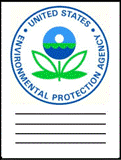United States Environmental Protection Agency

United States Environmental Protection Agency: Publications
Document Type
Article
Date of this Version
10-19-2019
Citation
J Appl Toxicol. 2020;1–13. DOI: 10.1002/jat.3925
Abstract
Environmental contamination can negatively impact fish populations. In addition to acute toxicity leading to death, toxicants can reduce fish growth and lower reproduction. The potential for adverse population level effects of environmental contaminants are estimated to conduct risk assessments from laboratory toxicity tests that most often measure apical endpoints related to growth, survival and reproduction. The relationships between these effect endpoints are being evaluated to predict shifts in fish population demography better after exposure to environmental toxicants. Environmental contaminants can also affect fish populations indirectly by reducing prey biomass. However, estimating the magnitude of the combined effects of prey reduction and direct toxicity is difficult and rarely attempted. Here we describe a toxicity test designed to estimate the effect on Japanese medaka of both reduced food and chronic exposure to diazinon, an acetylcholinesterase inhibiting organophosphate pesticide. Fish were reared with limited food ration and/or diazinon exposure through a full life cycle to assess possible interactions between the two stressors in their effects on growth and reproduction. Diazinon exposure (10 or 20 μg/L), reduced ration (50% and 25% of ad libitum), or combinations of both lowered growth rates and reproductive output of Japanese medaka. In addition, growth and reproduction alone were modeled, and then various relationships between the two stressors (diazinon and ration) and how they relate to growth and reproduction were modeled.
Included in
Earth Sciences Commons, Environmental Health and Protection Commons, Environmental Monitoring Commons, Other Environmental Sciences Commons


Comments
This article has been contributed to by US Government employees and their work is in the public domain in the USA.